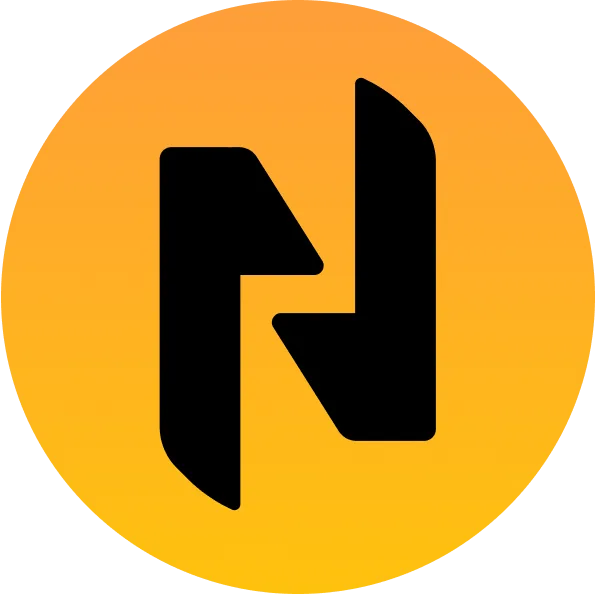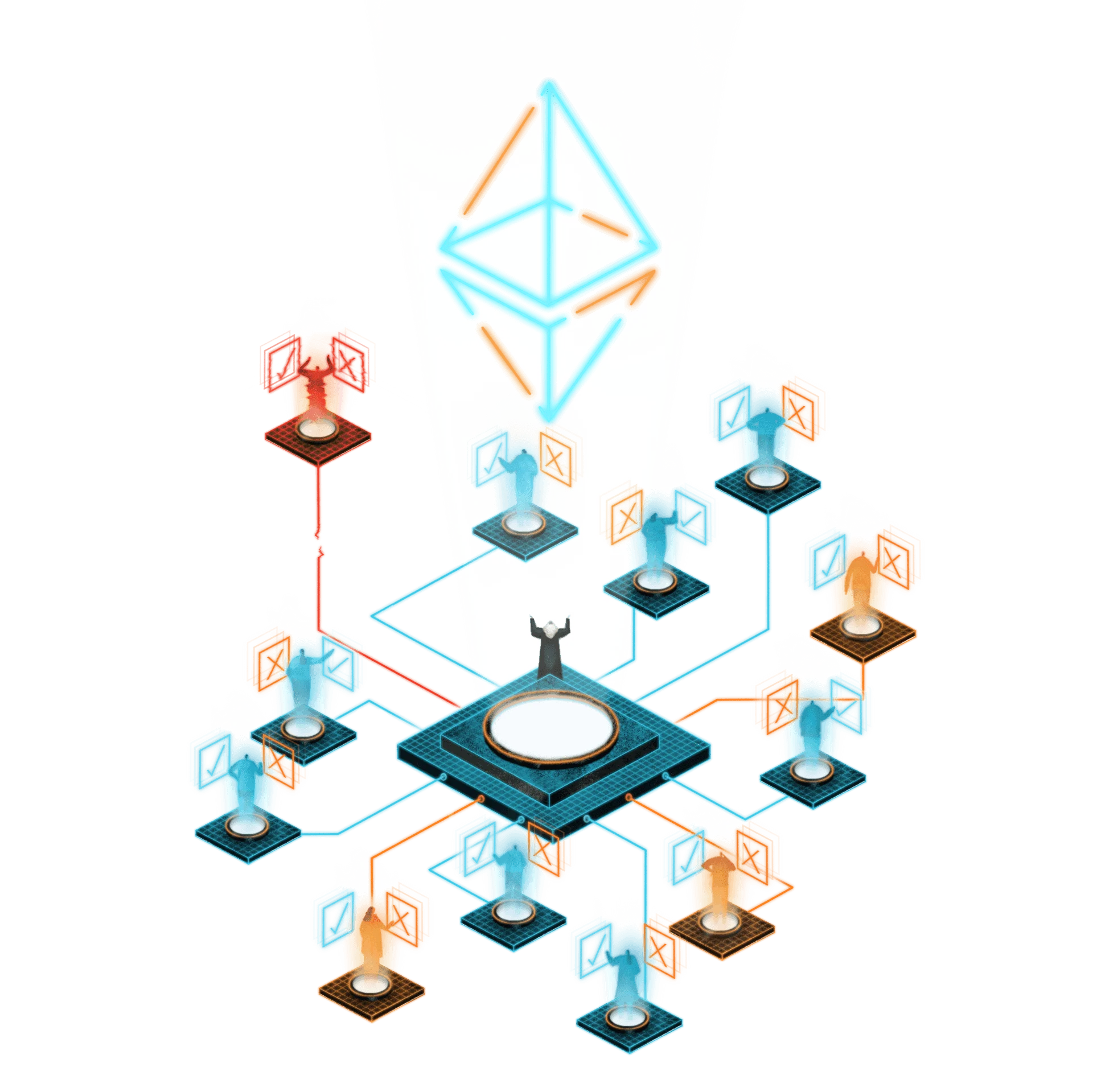Back to Blog
What Is an NFT? A Guide to Web3 in 2023

NFT.com Team
Jul 6th, 2022
.7 min read

We get it. NFTs are a confusing part of an already confusing new sector of the financial market.
But don’t worry, we’re NFT.com, we’ve got you covered.
What is an NFT?
Cryptocurrency tokens like Bitcoin (BTC) are fungible, meaning 1 bitcoin is equal to any other bitcoin. Each bitcoin is indistinguishable from any other bitcoin.
A non-fungible token (NFT) is a cryptographic asset — a unique digital token stored on a blockchain that is distinguishable from any other token.
This property of uniqueness has inspired an industry around different use cases of NFTs ranging from art to intellectual property and more.
Fungible Tokens and Non-Fungible Tokens
Fungible assets are interchangeable with one another. A dollar can be traded for a dollar. A share of a company can be traded for another share. A bitcoin for a bitcoin. Fungible coins are indistinguishable from one another.
So what does it mean for something to be Non-Fungible? Non-fungible assets are unique. They are distinguishable from an asset even of a similar type. You can think of this like trading a piece of hand drawn art, for another piece of hand drawn art. They are both art - maybe even the same drawing, however they are completely different physical objects and unique pieces of art.
It is this ability to establish a completely unique digital “thing” that has brought so much value to creators and the web3 space over the past few years.
Today, NFTs most commonly take the form of digital art, collectibles, or access passes. All information related to that NFT is recorded on a blockchain where you can view the history of ownership, metadata information, as well as what the NFT represents. These items can be bought and sold using cryptocurrency or cash.
NFTs can be valued by the unique traits of the asset. Art NFTs can be evaluated by the traits of the design. Membership NFTs can be evaluated by the benefits of the membership. Each NFT can be valued as a class, as well as the unique traits of the NFT within that class.
Art NFTs can be photographed, copied or screenshot much like art you may see in a museum. However, these copies are not valued the same as the original piece.
NFTs, issued on a public ledger, are verifiable both in their uniqueness (non-fungibility) as well as their provenance. This means that a unique piece of art maintains its value independently to copies. A poster of the Mona Lisa is worth nothing compared to the original hanging in the Louvre.
NFTs Explained
With an understanding of fungibility, we can dive deeper into how NFTs work.
NFTs are digital tokens created on a blockchain with reference data tied to the traits of the NFT. For example, an NFT representing art would have the image and traits of the art described in the metadata of the token. This creates an auditable log of the tokens creation, metadata, ownership and transaction history over time.
The majority of NFTs today exist on the Ethereum blockchain. Standards like the ERC-721 tokenization standard make it easier for others in the web3 space to create apps and tools that work with them.
NFTs can be created either through written code that interacts directly with the Ethereum blockchain or through a user interface that follows the basic template set forth by the token standard.
NFTs also have the ability to link to off-chain data. This is often done in cases where the files correlated to the NFT are too large and would be too expensive to host on the Ethereum blockchain — which incurs high fees for data consumption and storage. Therefore, the data may be hosted by a centralized hosting service. The metadata within the NFT then points to that external location.
The use cases for NFTs are vast, even allowing for the digital representation of physical items, removing the need for intermediaries and streamlining the process of transferring ownership. Expect to see business applications of NFT technology expand as adoption grows.
Examples of NFTs
NFT projects have exploded in recent years with creatives and companies from multiple different sectors trying to get a piece of this multi-billion dollar market.
In 2017, Larva Labs created the NFT collection CryptoPunks, becoming one of the first tokenized collections built on the Ethereum blockchain. This collection of 10,000 8-bit, cyberpunk-inspired NFTs has gone from experiment to icon, with some CryptoPunks selling for millions of dollars each.
The CryptoPunks collection is known as one of the first “pfp” or Profile Picture collections. The metadata for each CryptoPunk specifies different visual traits, making each one completely unique.
Another major player in the early NFT market, Cryptokitties, was launched in 2017 by DapperLabs. Each kitty is a unique NFT that can be bought, sold, or bred with other Cryptokitties to make more unique Cryptokitties with varying levels of rarity and value.
Each Cryptokitties metadata defines their “genes” which generates their appearance and can be passed on to their offspring. Cryptokitties were the first NFTs minted via the ERC-721 tokenization standard.
The Bored Ape Yacht Club (BAYC) launched in 2021 and quickly permeated the mainstream thanks to high-profile adopters like Jimmy Fallon and Stephen Curry as well as companies like Adidas. In December of that same year, BAYC overtook CryptoPunks as the highest-priced NFTs with an average selling price of 84 eth.
While the BAYC initially launched as “pfp” art collection, it has since become a utility NFT granting access to exclusive online and real world opportunities.
Utility NFTs
Utility NFTs are often classified as any NFT with a use case beyond visual aesthetics. Most commonly, utility NFTs provide owners with access to certain privileges or rewards that are only gained and accessed through ownership of the utility NFT. This could be a theater ticket, a gym membership, a commemorative token from attending an event, or even a digital subscription box.
Utility NFTs are created in much the same way as art NFTs, with the major differentiator being that they grant access to something. Using our previous example, Bored Ape Yacht Club NFTs became utility NFTs when they started to allow owners of BAYC NFTs access to the “Yacht Club” — an exclusive social club with benefits like access to secret in-person events, NFT collectibles, and a virtual wallet. They further increased this utility by dropping Bored Ape owners "Ape Coin" - a fungible token now traded on popular exchanges.
Utility NFTs have spilled over into other sectors as well. In 2021, American rock band Kings of Leon became the first band to ever release an album as an NFT with the help of YellowHeart Crypto. Their eighth studio album, When You See Yourself, was released as both a physical item and three different NFTs, each with varying levels of utility including digital downloads of the album and front row tickets for every subsequent tour.
NFT.com’s Genesis Keys can are also considered utility NFTs as they grant owners the ability to mint Profile NFTs, as well as access to beta features, and an exclusive private community.
Utility NFTs currently represent one of the most promising sectors of the web3 market.
Why are NFTs valuable?
NFTs often derive their value from being the ability to prove origination and ownership. The limited supply of any given asset creates a higher demand. However, the demand relies on several other factors.
As mentioned earlier, some NFT collections have high name recognition. NFTs in these collections tend to be of much higher value. To use art as an example, a painting created by a famous artist will often be worth much more than one bought from a new unknown artist.
The value of an art NFT also depends on the future value of the piece. Following the art analogy, say you saw a young Michelangelo selling a painting on the side of the road. The price would likely be very low, but after he goes on to paint the Sistine Chapel, the value of one of his original paintings would skyrocket.
The same applies to art in the NFT space - as after all, it’s still art! And as we can see, those who bought Bored Apes when they first came out, did so at a low undiscovered price and now own a highly-valued work of digital art.
The utility of a given NFT also contributes to its value. This is where art NFTs most noticeably differ from traditional art. Owning a Picasso does not get you anything but a Picasso and the reputation of owning a Picasso. Owning an NFT however, may get you access to additional benefits depending on the project. As such, an NFT with utility may have a higher value than those without.
Lastly, and perhaps most importantly, the real value of an NFT lies in the eyes of the beholder. Like art or music or films, people buy things that they enjoy owning. This is the perceived value of art. To you, a piece might be invaluable based on its aesthetic alone, and ultimately that may dictate your buying decision.
Where to buy NFTs
NFTs can be bought and sold on platforms like OpenSea, Rarible, Nifty Gateway, and more. To buy an NFT, you will likely need to have some form of cryptocurrency — though some fiat options exist.
Purchasing cryptocurrency can be done by opening an account with a cryptocurrency exchange. Once you do, you will want to buy the currency native to the NFT you’re purchasing. Currently, the majority of NFTs are still based on the Ethereum blockchain, and can be purchased with Ether.
Once you have purchased your cryptocurrency, you will then need to transfer your it to a crypto wallet. These digital wallets are a place where you can safeguard your digital assets, like NFTs or tokens. MetaMask is the most common crypto wallet for those looking to buy and sell NFTs on the Ethereum blockchain.
To use MetaMask, navigate to their website and install it on your browser. Be careful with your MetaMask recovery phrase. If that falls into the wrong hands, you could lose your assets permanently!
Once you have Ethereum in your MetaMask wallet, you can connect your wallet to an exchange and draw from it to buy and sell NFTs. Once owned, the NFT will be stored in your wallet and can be displayed with a NFT gallery.
Displaying your NFTs
Once you have a NFT, you can view it on Etherscan, Opensea, or in your MetaMask wallet. But if you’re looking for a more stylized and artistic way to display your NFTs, you can get a Profile right here on NFT.com
NFT.com is the best place to display NFTs with highly customizable and personalized Profile galleries which form the foundation for a decentralized web3 social network. NFT.com Profiles are themselves NFTs, meaning they are tied to a unique ERC-721 token, enabling you to access and build your NFT gallery on a Profile you truly own. NFT.com is currently in beta and only available to Genesis Key NFT holders.
Conclusion
You should now have a basic understanding of NTFs and their varied utilities and value. There is a lot more to learn about NFTs, as well as their possible use-cases, but that is exactly what makes web3 so fascinating!
To learn more about all things NFTs, check out NFT.com/Articles.
Related Posts

Why is everyone creating NFTs in 2022? - NFT.com
New NFT use cases are emerging every day. Find out what new opportunities N...

Don Thibeau
Jul 6th, 2022

How to be early to an NFT drop - Explained - NFT.com
Learn how to find new NFTs, get in on new NFT drops, and how content like v...

Alec Otto
Sep 2nd, 2022

The 10 most expensive NFT sales - Full Breakdown - NFT.com
2021 proved the sky is the limit for digital art sales. Find out why, and w...

NFT.com Team
Jul 18th, 2022